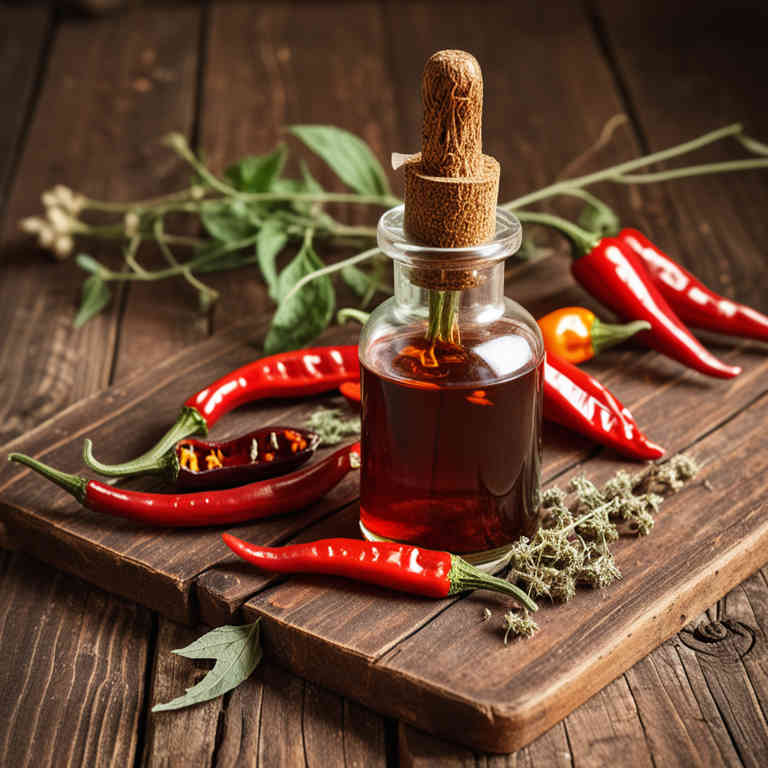Capsicum annuum tincture for medicinal use

Capsicum annuum tincture is a concentrated liquid preparation made by soaking dried Capsicum annuum (common chili pepper) in alcohol or another solvent.
It is commonly used in herbalism for its warming and stimulating properties. This tincture is often employed to support circulation, alleviate pain, and promote digestion. It may also be used externally to treat muscle aches and joint inflammation.
Due to its potency, it is typically used in small doses under the guidance of a trained herbalist.
Uses
Capsicum annuum tincture has been used to treat various ailments across different cultures for centuries.
Historically, it was employed in traditional medicine systems such as Ayurveda and Chinese medicine to alleviate pain and reduce inflammation. In modern times, it is commonly used as a topical preparation for conditions like arthritis and muscle pain due to its capsaicin content. The active compound, capsaicin, works by depleting substance P, a neurotransmitter involved in pain signaling.
Today, it is also being explored for its potential in managing chronic pain and even as a tool in weight management programs.
Benefits
Capsicum annuum tincture has health benefits such as improving circulation, reducing inflammation, and supporting immune function.
It is commonly used to alleviate symptoms of arthritis and muscle pain due to its capsaicin content, which has analgesic properties. The tincture may also help in managing pain by depleting substance P, a neurotransmitter involved in transmitting pain signals. Additionally, it is believed to enhance metabolic rate and may assist in weight management.
However, it should be used with caution, as it can cause skin irritation or gastrointestinal discomfort in some individuals.
Constituents
Capsicum annuum tincture active constituents include capsaicin, capsinoids, and various alkaloids such as nordihydroguaiaretic acid (NDGA).
These compounds are responsible for the preparation's thermogenic and analgesic properties. Capsaicin, the primary active component, interacts with pain receptors to provide relief from conditions like arthritis and neuropathic pain. NDGA has demonstrated anti-inflammatory and antioxidant effects, supporting overall health and immune function.
This tincture is often used to promote circulation, reduce inflammation, and support metabolic health.
Preparation
To make Capsicum annuum tincture, first gather fresh or dried Capsicum annuum peppers and a high-proof alcohol such as vodka or ethanol.
Wash the peppers thoroughly and chop them into small pieces to increase surface area for extraction. Place the chopped peppers in a clean glass jar and pour the alcohol over them, ensuring they are fully submerged. Let the mixture sit in a dark, cool place for 4 to 6 weeks, shaking the jar occasionally to promote extraction.
After the steeping period, strain the liquid through a fine mesh strainer or cheesecloth to separate the tincture from the plant material, then store it in a dark glass bottle away from light.
Side Effects
Capsicum annuum tincture may lead to gastrointestinal irritation, including heartburn, nausea, and stomach pain, due to its capsaicin content.
It can also cause a burning sensation in the mouth and throat, and may increase the risk of ulcers in individuals with a history of gastrointestinal issues. Prolonged use may result in dependency or tolerance, reducing its effectiveness over time. In some cases, it may interact with medications, such as blood thinners or diabetes drugs, leading to adverse effects.
It is important to consult a healthcare professional before using this preparation, especially for individuals with sensitive digestive systems or chronic health conditions.